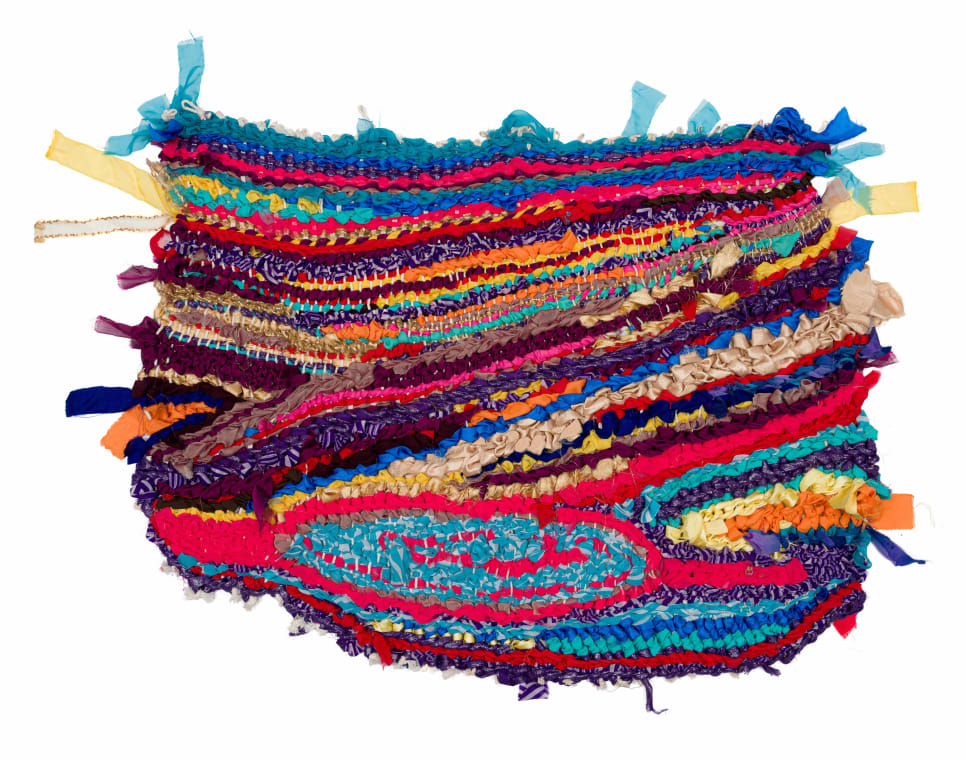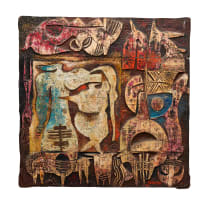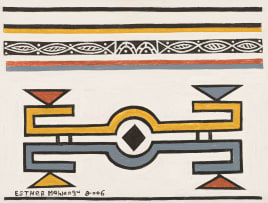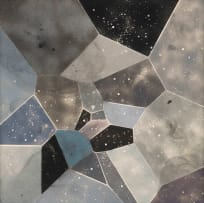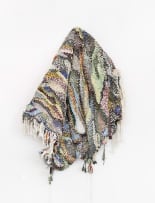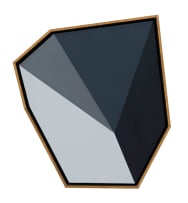Rough & Smooth: A Focus on Surface and Texture
Live Virtual Auction, 12 November 2024
Rough & Smooth
About this Item
Notes
Q: How does your heritage influence your artistic work?
A: My heritage is deeply intertwined with my work. I come from a background rooted in the Indian diaspora, with my great-great grandfather having worked as an indentured labourer on sugar estates in KwaZulu-Natal, whilst women performed familial care duties. While my ancestry lies in a mythical India, I am grounded in South Africa, shaped by its geopolitics. This duality allows me to explore the fluid cartography between these worlds. My work often incorporates materials passed down from my mother and grandmothers, such as sarees, which represent not only personal history but also the limitations and challenges they faced in shaping their own narratives.
Q: What themes do you explore in your work, and why are they important to you?
A: I focus on themes of colonialism, invisible labour, trauma, and the enduring impacts of history on the present. Growing up in KwaZulu-Natal, I have always been aware of the quiet violence that lingers in landscapes, like the sugarcane fields where my ancestors laboured that lie opposite my family home, and the stark division of wealth and poverty as a result of apartheid spatial planning. The work I do is an attempt to unveil these invisible histories, exploring how beauty coexists with danger, and how the past continues to shape the present. By embracing both personal and collective histories, I aim to create spaces for reflection and dialogue about our shared past.
Q: What role does the ocean play in your understanding of history and the world?
A: I think of the African-Indian Ocean as a 'world-making force'-a site where histories meet, merge, and transform. It symbolises a kind of transnational solidarity that transcends borders. The ocean's constant motion, its waves retreating and returning with stories untold, serves as a metaphor for how histories-especially those marked by displacement, violence, and migration- are continually remade. In my work, I aim to capture this fluidity and the sense that something beautiful can emerge from the meeting of different cultures and worlds.
Q: Can you explain how the landscapes of KwaZulu-Natal influence your perception of the past?
A: The landscapes of KwaZulu-Natal are rich with the invisible traces of colonial labour and trauma. Fields and landscapes carry the weight of history-of invisible labour and the quiet violence embedded in the land. I often reflect on how the landscape, despite its beauty, holds within it a past that is not always visible but still very present. My work attempts to bring attention to these hidden histories, recognising the pain and disparity that coexist alongside beauty.
Q: How do you approach the concept of limitations in your work?
A: I am fascinated by the concept of limitations - whether imposed by borders, cultural expectations, or historical narratives. Borders, while they may seem like divisions, are also points of contact where different worlds meet. In my work, I explore how these limitations can be both restrictive and generative, allowing for new stories to emerge. By using materials like my mother's and grandmother's sarees, I confront the limitations placed on them, and by extension on myself, while also honouring the strength and resilience of
